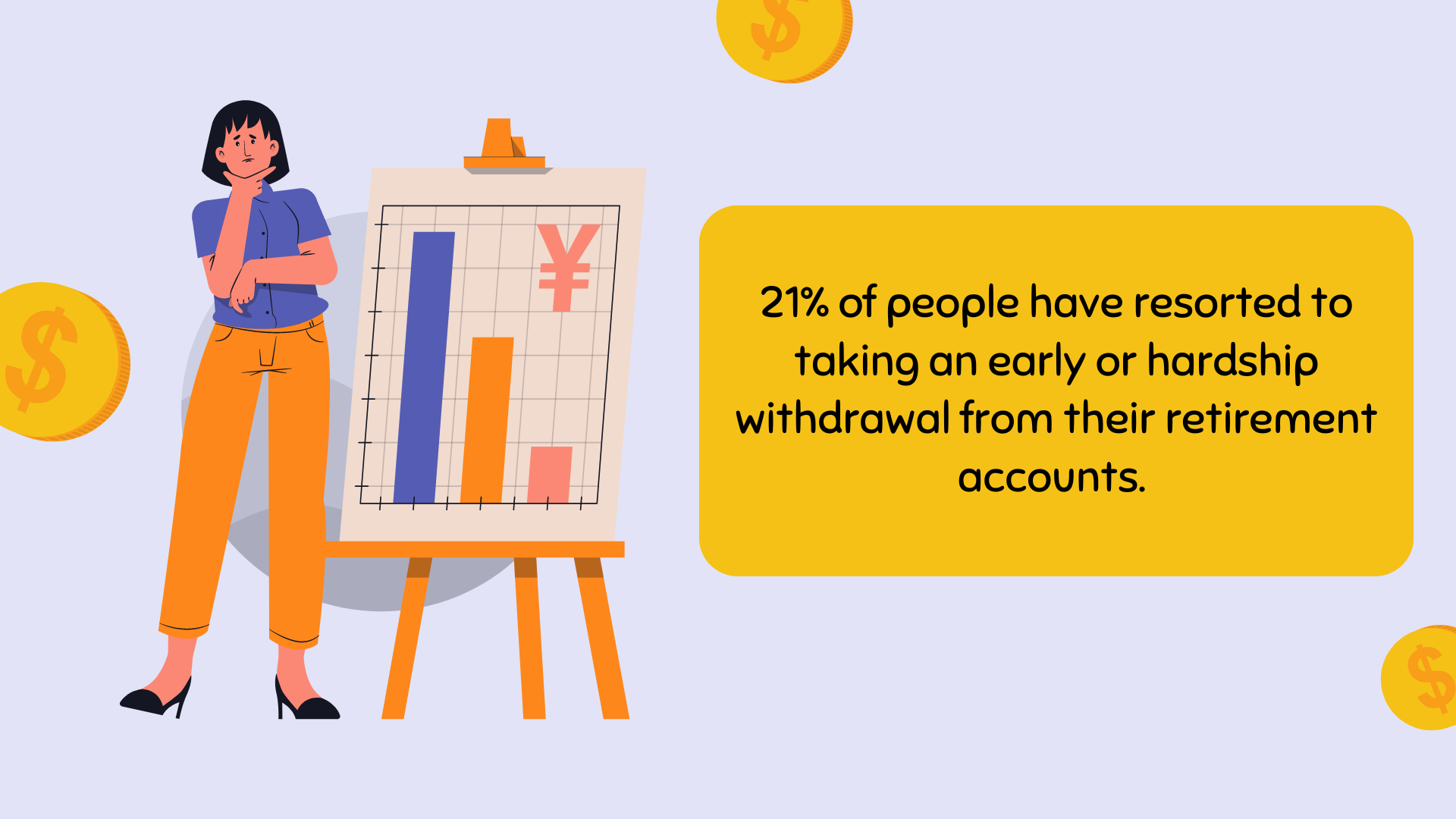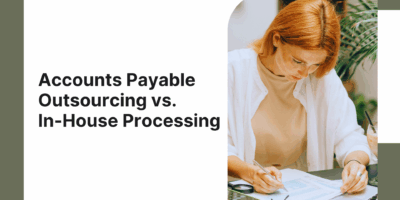
What is Buyer Intent Data?
Gain an understanding of buyer intent data and its benefits for marketing and sales teams. Learn how to leverage it to generate new, qualified leads and increase sales conversions.

Starting a 401(k) account is simple: set it up, keep track of 401(k) trends, and watch it grow.
With each paycheck, you can make small investments that steadily increase over time, eventually providing a moderately sized retirement fund.
However, if you suddenly face financial difficulties and need quick access to cash, you may have to resort to a 401(k) hardship withdrawal. Unlike early 401(k) withdrawals, this option typically doesn’t involve a penalty fee, and unlike a personal loan, there’s no repayment required.
However, it’s important to note that the IRS oversees hardship withdrawals, and they come with some strict guidelines.
Here’s everything you need to know about how to get approved for a hardship withdrawal.
What is a hardship withdrawal, then?
An emergency withdrawal of funds from a retirement plan is a hardship withdrawal, also called hardship distribution.
The Internal Revenue Service (IRS) specifies in its FAQ on hardship distributions that withdrawals from 401(k) plans must be made due to an “immediate and heavy” need, and the amount taken out must correspond to the severity of that need.
Please be aware that although the IRS does permit hardship withdrawals, it ultimately depends on each plan administrator whether they allow these types of withdrawals in their retirement plans.
Today, most businesses understand that employee financial stress negatively affects their health and productivity, thus permitting these withdrawals under specific guidelines.
Hardship withdrawals have been a trending topic, particularly given the current economic climate. According to the Transamerica Institute, 21% of people have resorted to taking an early or hardship withdrawal from their retirement accounts.
However, it’s crucial to understand the implications and eligibility requirements before making this decision.

The IRS permits hardship withdrawals under specific circumstances, such as covering medical expenses, paying tuition for yourself or a family member, preventing eviction or foreclosure, covering funeral costs, or repairing damage to your primary residence.
The IRS clarifies that purchases, such as vehicles or boats, would not be permitted since they do not qualify as an immediate and heavy financial need.
Similarly, the question, “Can you use your 401(k) as a first-time home buyer?” frequently comes up, and the answer is yes – a hardship withdrawal might be an option.
On the other hand, if you wanted to upgrade your car or plan a family vacation, it wouldn’t be allowed.
To qualify for a hardship withdrawal, the IRS requires that you exhaust all other reasonable sources of funds first.
So, employees may have to provide a written statement confirming that their needs can’t be met through other readily available resources, such as:
If you’re asking, “Can I cash out my 401(k) while still employed?” the answer depends on your plan’s rules, which also dictate hardship withdrawals.
Remember that employers have a lot of flexibility in establishing the rules for their retirement plans, and there may be subtle differences between the guidelines for a 403(b) plan vs. 401(k) plan or even a 457 plan.
In other words, employer-specific regulations on hardship withdrawals can vary, adding another layer of requirements to the IRS guidelines.
Although the IRS sets the basic eligibility criteria, employers often have their own requirements that employees must fulfill to access their 401(k) funds during a hardship scenario.
To be more specific, these rules may require more paperwork, have stricter definitions of financial hardship, or cap the maximum amount that can be taken out.
When considering how many hardship withdrawals are allowed in a year, it’s important to note that the IRS doesn’t impose a set limit.
Instead, your employer’s specific plan rules determine the number of hardship withdrawals you can take annually. Some plans may allow only one or two hardship withdrawals yearly, while others might be more flexible.
Still, each withdrawal lowers your retirement savings and may have tax implications, so you should only make them when necessary.
So, what is a hardship withdrawal for 401(k)?
Simply put, a hardship withdrawal for a 401(k) allows employees to withdraw money from their retirement savings before turning 59½ without the usual 10% early withdrawal penalty, as long as they meet specific IRS rules.
As mentioned, there are several reasons for 401(k) hardship withdrawal, for which the penalty is waived.
However, even when the penalty is waived, the withdrawn amount is still subject to regular income taxes unless it’s from a Roth 401(k).
Understanding how to get approved for a hardship withdrawal is crucial before accessing your 401(k) funds during a financial emergency.
Before learning how to get approved for a hardship withdrawal, make sure your 401(k) plan allows these withdrawals.
Since the process can differ between different 401(k) providers, it’s always a good idea to contact your provider directly to clarify what is needed and to get specific instructions.
Once confirmed, note the turnaround time for processing applications and the timeframe for distributing funds. Opting for a direct deposit is often the quickest way to receive your money, so it’s a smart choice if time is of the essence.
When ready to proceed, you must typically submit key documents online or in person through your 401(k) plan’s portal.
Some plans may require additional documentation, such as medical bills, eviction notices, or repair estimates related to the hardship.
Thanks to changes in IRS rules, applying for a hardship withdrawal has become somewhat easier in recent years.
For instance, a 2018 regulatory amendment now permits workers to withdraw employer-matched funds and their contributions.
As you plan your withdrawal, it’s wise also to consider how to protect your 401(k) from a stock market crash, guaranteeing that your remaining funds continue to grow.
If you’re already experiencing financial hardship, obtaining insurance coverage or building an emergency fund may be too late.
Before resorting to a hardship withdrawal, it’s worth considering how long your 401(k) will last in retirement, as depleting your savings now could impact your financial security in the future.
Moreover, employees who take a hardship withdrawal cannot return the money to the plan or transfer it to another retirement plan.
Due to these factors, it’s best to explore other options first.
Generally, using funds from a bank or non-retirement account makes sense instead of your retirement savings.
Alternatively, a 401(k) loan might be a better option than a hardship withdrawal, as it allows you to borrow against your savings without permanently reducing your retirement balance.
Loans typically have lower fees and penalties than hardship withdrawals, and you’ll be able to repay the loan over time, helping preserve your long-term financial security.
For a smooth experience on how to get approved for a hardship withdrawal, follow these vital tips to ensure your application is successful and on time.
Exhaust Other Options First – The IRS requires you to explore all other reasonable sources of funds before taking a hardship withdrawal. So, keep records of your efforts, like loan applications.
If your financial hardship is severe, you might qualify for temporary relief through existing government programs like Medicaid, Social Security Disability, or Temporary Assistance for Needy Families (TANF).
These programs can provide essential support during tough times without jeopardizing long-term financial security.
Disclosure: Some of the products featured in this blog post may come from our partners who compensate us. This might influence the selection of products we feature and their placement and presentation on the page. However, it does not impact our evaluations; our opinions are our own. The information provided in this post is for general informational purposes only and should not be considered as legal, tax, accounting, or investment advice. For advice on specific issues, please consult with a qualified professional.
Senior Content Writer at Shortlister
Browse our curated list of vendors to find the best solution for your needs.
Subscribe to our newsletter for the latest trends, expert tips, and workplace insights!

Gain an understanding of buyer intent data and its benefits for marketing and sales teams. Learn how to leverage it to generate new, qualified leads and increase sales conversions.

From uncovering new qualified leads and creating meaningful relationships with prospects to driving more sales, learn how intent data is a cutting-edge tool for an effective sales strategy.

Offering a 401(k) sends a clear message to your workers that you care – and are willing to invest in – their future. Explore our 401(k) Providers Buyers Guide to equip your organization with the knowledge for a successful selection and implementation process.

Accounts payable remains heavily manual, consuming time and resources. Could automation or outsourcing to AP specialists be the better way forward?
Used by most of the top employee benefits consultants in the US, Shortlister is where you can find, research and select HR and benefits vendors for your clients.
Shortlister helps you reach your ideal prospects. Claim your free account to control your message and receive employer, consultant and health plan leads.